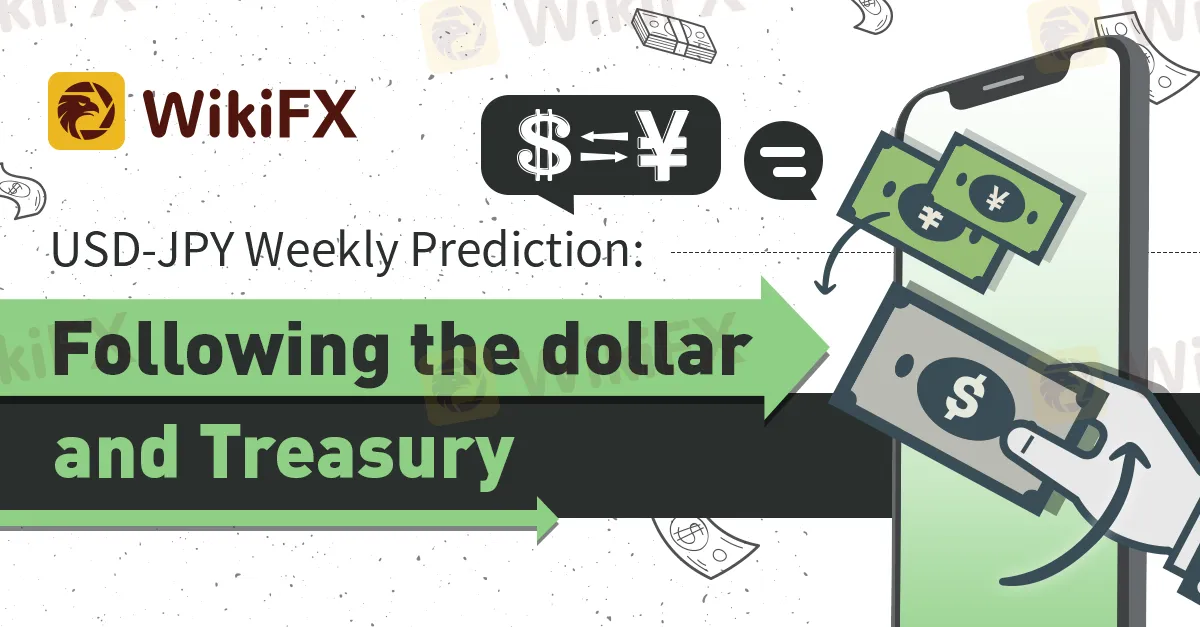简体中文
繁體中文
English
Pусский
日本語
ภาษาไทย
Tiếng Việt
Bahasa Indonesia
Español
हिन्दी
Filippiiniläinen
Français
Deutsch
Português
Türkçe
한국어
العربية
USD-JPY Weekly Prediction: Following the dollar and Treasury rates, March 29th – April 2nd
Abstract:US Primary Jobless Claims and GDP data advance. 10-year Treasury rates slope on Thursday then recuperate. USD-JPY returns to a 12-month peak on Friday.

US Primary Jobless Claims and GDP data advance.
10-year Treasury rates slope on Thursday then recuperate.
USD-JPY returns to a 12-month peak on Friday.

USD-JPY sustained its consolidation earlier this week continuing below 109.25 confrontation, but Thursday's price ended just beneath this price set the stage for a calm navigate on Friday and a swift run to the 12-month peak.

The huge sustenance the Bank of Japan is providing to equity prices may be having the conflicting outcome on insight, belittling what little sureness exists in the Japanese economy.
American Initial Jobless Claims, the tell-tale of the covid-19 economy, plunged to their deepest level since March 13, 2020, the preceding week before the lockdown.
Two features are moving US rates higher;
Economic development in the US is projected to hasten this year. The Fed's Projection Materials amplified the 2021 GDP approximation to 6.5% GDP from September's 4.2%.
Inflation is also posed for a speedy increase with the Fed's favourite device, Core Personal Consumption Expenditure (PCE) Price index, mounting to 2.2% from 1.8% and the frontpage rate attaining 2.4% from 1.8% by the dusk of 2021.
USD-JPY Overview
The dissimilarity between the hopeful US economy and its likeness in Treasury rates and motionless Japan has been and holds as the currency pairs remark. The 6.9% ascent in the USD-JPY this year is, excluding the pandemic fear in March, the sharpest since the 14.7% hop from 103.02 in November 3, 2016 to 118.21 that December.
If the US economy achieves as predicted, Treasury rates could move significantly higher. With the BOJ dedicated to its ostensibly lasting zero rate policy, which impedes Japan's economic repossession rather than helping it, the yen will hold the self-protective for the abrupt future.
The zone above 110.00 was seriously traded from late 2016 until the mid-2019 and the lower supports will provide many openings for profitmaking.

Providing the rate deviation between the US and Japan continues to broaden, the USD-JPY will increase. The laidback triumph of resistance at 109.20 on Friday defines the course for the week ahead. Consolidation above the base at 109.20 is the probable technical preparation this week.
The two-bordering resistance at 110.00 and 110.30 are from January 2020 and of light impact. The identical pandemic highs from February and March would not offer significant resistance on their own but they overlap with ranges from 2019. Resistance above 110.30 will be much firmer to break and reverse to the base at 109.20 would not preclude the rising drive. Only an arrival at the 108.60-109.20 would dull the general course.
The Relative Strength Index at 75.70 is overbought but providing the pair holds above 109.20, it is not a sell signal. The nearest MA at 108.39 complements to support at 108.30. The 100day MA at 105.14 and the 200-day MA at 105.53 are out of the present technical depiction.

Resistance: 110.00, 110.30, 110.70, 111.00, 111.60
Support: 109.60, 109.20, 108.60, 108.30, 108.00
Disclaimer:
The views in this article only represent the author's personal views, and do not constitute investment advice on this platform. This platform does not guarantee the accuracy, completeness and timeliness of the information in the article, and will not be liable for any loss caused by the use of or reliance on the information in the article.
Read more

Key Forex Strategies
New to forex trading and looking for simple and effective trading strategies? We got you covered! In this quick guide, we'll explain some of the key forex strategies which are easy to digest. So, let's start!

Fundamental vs Technical Analysis
Fundamental and technical analysis play some of the most influential and critical roles in making trading decisions amongst traders today. They are widely accepted by stock, foreign exchange, indices and cryptocurrency traders worldwide. Traders use either or both of the methods to make key trading decisions in their respective markets.

Going Short of JPY Is Boosted by Yellen’s Remark on Interest-Rate Hikes Again
When interviewed by Bloomberg, Yellen, the U.S. Treasury Secretary, indicated that the USD 4-trillion budget released by Biden would be beneficial to America even if it may increase inflation and interest rates.

Brent oil is predicted of bullish repricing by Goldman Sach
According to Goldman Sachs' head of energy research, a nuclear deal between the U.S. and Iran could send energy prices higher - even if it means more supply in the oil markets. Talks are ongoing in Vienna between Iran and the six world powers - the U.S., China, Russia, France, U.K., and Germany - trying to salvage the 2015 landmark deal. Officials say there's been progress, but the conclusion of the negotiations remains unclear and oil prices have been soaring as a result.
WikiFX Broker
Latest News
Geopolitical Events: What They Are & Their Impact?
Volkswagen agrees deal to avoid Germany plant closures
Top 10 Trading Indicators Every Forex Trader Should Know
TradingView Launches Liquidity Analysis Tool DEX Screener
MultiBank Group Wins Big at Traders Fair Hong Kong 2024
WikiEXPO Global Expert Interview: Simone Martin—— Exploring Financial Regulation Change
'Young investors make investment decisions impulsively to keep up with current trends' FCA Reveals
Why Do You Feel Scared During Trade Execution?
CySEC Settles Compliance Case with Fxview Operator Charlgate Ltd
Malaysian Influencer Detained in Taiwan Over Alleged Role in Fraud Scheme
Currency Calculator


